How to put a chain-link fence
GOSTs standardize a lot, including how it is possible or impossible to delimit areas. So, for example, the standards prescribe to delimit neighboring areas with transparent fences. Since the border is usually long, it is desirable that the fence is inexpensive. Actually, the choice is not great - a fence from a chain-link mesh or wattle... The wattle fence, although cheap, is extremely short-lived, so only the mesh fence remains. Generally speaking, it is correct to say "a fence made of a chain-link netting", but for the ear it is more common to decline the name.
Whatever the name of this fence, but it has a solid number of positive aspects. The first and important plus is cheapness. This applies to both the filling itself - the mesh, and the rest of the structure. No foundation is required to stretch the mesh. It is enough to drill holes about a meter, insert a post and, after filling up the rubble, compact it well. That's it, no concrete work. On most soils, this setting method for a given filling works at "five".
The content of the article
Designs and methods of installation
The fact is that the chain-link fence is light. Moreover, it is light both in terms of its own weight and in terms of perceived wind loads. No matter how strong the winds blow, the pressure transmitted by the mesh to the pillars remains insignificant. Due to the low weight, such a technology for installing pillars can be used: in a hole, under filling with sand or gravel, without concrete. Moreover, there is such a fence without problems even on heaving clay soils with a high level of groundwater, and even with a great depth of freezing.
Without guides
This is how it works. We are talking about the simplest design: just pillars with a mesh stretched between them. As you can see, the pillars are buried less than a meter deep. What happens to such a fence on soils that normally drain water? All the water near the column goes through the sand or gravel down to the bottom of the hole. There it leaves in a natural way - seeps into the underlying layers. Even if frost "hits" and the sand or gravel around the column freezes, the moisture content is not enough to have any significant effect on the column.
On clays and loams, the same principle can be used, only it is necessary to cover it with gravel. And be sure to pour 10-15 centimeters of gravel on the bottom of the hole, and only then install the post. What happens in this case. Water also accumulates below, but it leaves very slowly. It may well happen that by the time of freezing, the rubble will still be wet, or even be in the water.
What happens then? It will freeze and become tough. But since the soil also freezes, it presses on the rubble. The forces are considerable, and the ice breaks, the crushed stone becomes mobile and compensates for most of the pressure created by the soil. As a result, if the pillars move, they are quite small - from a few millimeters to several centimeters. Since the structure is not rigid, the mesh will easily transfer it without any harm. After everything has thawed, the pillars will drop into place. But such a scenario is only if they are positioned perfectly vertically. Otherwise, the pillars may tilt and you will have to fix everything.
With guides (slats)
Sometimes, in order for the fence to be more solid and better keep its shape, two longitudinal guides are attached to the posts. They can be from a pipe, or they can be from a bar. Wood, as a plastic material, will tolerate ground movements remarkably, but a welded pipe will create additional difficulties.
The degree of rigidity of such a fence is higher, and during heaving, if the columns are squeezed out, it is quite possible that in some places the pipes can be torn off. To prevent this situation, you will have to bury yourself below the freezing depth in your area. Everything else remains in effect: the hole is 15-20 cm deeper than required, there is gravel at the bottom, then a pipe is inserted, covered with well-tamped gravel.
Sectional
There is another design of a fence made of a chain-link mesh. Frames are welded from the corner, onto which the mesh is then stretched. The finished sections are welded to the exposed posts.
As is clear from the description, the design is also quite rigid. This means that on heaving soils (clay, loams), it is necessary to bury the pillars 20-30 cm below the freezing depth of the soil, but it is also desirable to do without concreting. If you fill the rubble with concrete, the probability that the pillar will "squeeze out" increases many times.
Types of mesh netting for a fence
Even such a seemingly simple material as a chain-link mesh is different. Moreover, the difference is substantial both in price and in service life.
- Non-galvanized. The cheapest material, but also the most short-lived, while requiring significant costs to maintain a normal appearance. Immediately after installation, the mesh must be painted, otherwise it will rust. Painting has to be renewed annually, or every two years.
- Galvanized. Significantly more expensive in price, but does not require painting and serves for a long time.
- Plasticized. A layer of polymer (plastic) is applied to the metal wire. This type of chain-link appeared not so long ago. It is even more expensive, but the view is the most attractive, the service life is even longer. When choosing, pay attention to the thickness and stiffness of the wire that is under the coating. Normal bends under the fingers with great difficulty. If it bends easily, then it will be difficult for you to pull it properly.
- Polymer or plastic. It is made of polymer, has additives that increase its resistance to ultraviolet radiation. It is painted in different colors, has different cell shapes. There are more familiar rectangular and even round holes similar to the cells of a regular stack. This type of mesh is sometimes referred to as "garden plastic fence". At the border with a neighbor, it can be used as a fence from the street - it will not work: insufficient strength.
In addition to different materials, the chain-link has a different cell size. It ranges from 25mm to 70mm. The larger the cell, the cheaper the mesh, but the less bearing capacity it has. If you put a fence from a chain-link mesh on the border with a neighbor, they usually take the middle link - from 40 mm to 60 mm.
What to look for when choosing a mesh
Examine each roll carefully. Its edges should not be curved. The top and bottom cells should have curved "tails". Moreover, it is desirable that the length of the folded part be more than half the length of the cell. This mesh is easier to pull on.
Pay attention to the thickness of the wire, how smooth the cells are, how nasty they lay. All deformations are a sign of poor quality.
If the netting is polymer-coated, check the manufacturer's warranty period. In the cheapest, not only does the wire often bend, they also use ordinary plastic, which, under the influence of ultraviolet radiation, becomes fragile after a couple of seasons and begins to crumble. Normal coverage can last up to ten years or more.Therefore, in this case, it is not worth chasing cheapness.
How to make a fence from a profiled sheet, read here.
What pillars to use
There are several options:
- Wooden pillars are made of timber or logs. The cheapest, but also the most "perishable" option. Antimicrobial treatment is required before installation. The best option is a special protective impregnation. To save money, you can paint the above-ground part, and the one that will be buried, it is better to saturate it with mining: immerse the pillars in a container for several hours. Before installing in the hole, you can additionally wrap this part with roofing material.
- Metal pillars. They can be made of round or square pipes, metal corner. The wall thickness is 2-3 mm, the pipe diameter is on average 50 mm, the profile section is 40-50 mm, the angle shelf is 50-60 mm.
- Concrete pillars. The most inconvenient option for installation: it is too difficult to attach the mesh to them, and it is difficult to install. In addition, the strength resource of reinforced concrete will not be in demand: too small loads are created by a fence made of a chain-link mesh.
The most convenient option of all of the above is a profile pipe, and better - a rectangular section. It is easy to attach the mesh to it, and you can weld hooks or wire if necessary. If possible, put these. The optimal section for the post is 25 * 40 mm or so. It is not worth taking a larger section - the fence is light.
The order of installation of pillars
First, the pillars are placed in the corners of the site. If you need to fence only one side, one post is placed at the beginning, the second at the end. Their verticality in all planes is strictly checked, the height is adjusted. At the very top and 10 cm above ground level, two cords are pulled. The rest of the pillars are placed on them. The height is leveled along the upper lace, the lower one serves to facilitate orientation: by attaching a plumb line to a point on the upper thread, you can find a place where the hole will be drilled.
The pitch of the posts is 2-3 meters. Less - too expensive, more - no point, the mesh will sag. When installing a mesh without a guide wire, it makes sense to place posts every 2 or 2.5 meters. This makes the net easier to pull without sagging. For other models - with wire, slats (guides) or sections - the step can be 3 m.
If the net will be pulled between the posts, the outer ones have a considerable load. so that they are not "led", put jibs. They are exposed, dug in, welded to an established post.
Installation of chain-link mesh
It only at first seems that it is easy to put a fence from a chain-link mesh. As soon as you start thinking about how to fix the net on the pole, how to pull it, everything is not so obvious and simple ... First, about the general rules. The mesh is attached to one of the corner posts. Fastened in at least four places. In principle, you can simply fasten it with wire by passing it into the cell.
The method is simple, but not the most reliable. If the fence is in the country, during the absence of the owners, the grid can be easily removed and carried away.
You can at least fix it on the first and last pillar more securely. To do this, take a steel bar with a thickness of at least 4 mm, thread it through the cells, weld to the post, grabbing each 40-50 cm (in the photo on the left).
Another way: weld three to four rods with a diameter of 6 mm to each post. A mesh is put on them, they are bent.
If you are still paranoid about removing the netting, you can drill two through holes in the post, insert a U-shaped rod curved in the shape of a horseshoe, grabbing the net with its "back". On the side where the ends come out, twist and rivet them, or weld.
Tension
There is another problem: how to stretch the mesh.If the design is simple - without slats (transverse guides that are fixed between the posts), you can simply stretch the mesh from one post to another. Just note that it is necessary to fasten it consistently to each pillar. Fastening first through one, and then in between is an unsuccessful idea: there will certainly be uneven tension and sagging.
How to stretch the mesh netting so that there is no sagging? Stick in the bar, grab it and pull with all your weight. The stretch will be quite significant. It is necessary to work with an assistant: one pulls and holds, the second holds.
With wire
This type of fence is good because it is installed quickly. But the top edge may sag. If someone climbs through it, the top will definitely jam. It is unlikely to be able to straighten it. To prevent the top from sagging and "wrinkling", a wire is pulled through the first row, it can be steel, or it can be in a plastic sheath - so that it does not rust.
If wire is used, the technology can be simple: make a loop at the end, throw it over the extreme post. Unwinding the wire trying to pull it, make another loop after two or three posts, wrapping the wire around the post. So until the end of the span. With the use of muscle strength, you will not be able to pull enough, and the wire will inevitably sag. It's easy to fix. Take a thick metal rod and twist with it, pulling the wire. Twisting is not enough? A little further, do another one. So pull up all the "spans". After that, you can start "pulling" the mesh, tying it to the stretched wire.
If you weld the "ears" at the top of the pillar - a metal bar with holes, the wire can be attached to them. It is easier to stretch a piece of 2-3 meters, but the work is slower.
Special wire tensioners can also be used. Then, having fixed the wire on one pillar, on the second it is passed into such a device as in the photo. It is fastened in a clip, and then with a key, the excess is wound onto the drum.
You can use a wire rope and lanyards - hooks with tie-clips (in a rigging store). On one side, a cable is twisted around the post, secured with a clamp. On the other, a lanyard is placed. Its middle part is threaded so you can stretch the cable.
Since the rope is more flexible, it can be passed through the links. In each will be too long, after two or three cells - normal. One more thing: take a cable with a polymer sheath: it will not rust.
With welded rod
A steel bar with a diameter of 6-8 mm is threaded into the upper cell, or slightly below. It is cut into pieces equal to the distance from one pillar to another. The threaded rod is welded to the post.
Pay attention to the top of this chain-link. This photo clearly shows that she has already begun to blossom. This is exactly the reason why it is necessary to take a mesh with folded ends. It just does not unravel and even without a wire or rod holds the edge well.
With slugs (guides)
In even more rigid structures, after the installation of the posts, slugs are welded to them. These are transverse pipes or wooden planks attached between the posts. The guide can be one, and maybe two or three.
As you can see in the photo, in this case, you can also fasten the mesh with a wire. It is quite obvious that all the methods described above can be used. The only difference is that the mesh is attached not only vertically, but also horizontally. The photo below shows another way - with the plates bolted on, the ends are riveted. This method can also be used with posts.
Read here how to make a wooden wicker fence.
Fence decoration from mesh-netting
No matter how the fence pleases you at first, after a while there is a desire either to decorate it, or to make it less transparent in order to hide from prying eyes.
The first way - the most obvious - is to plant plants. If neighbors don't mind, bindweed or any other annuals or perennials can be used.
If you just want to decorate your fence, you can make "embroidery". The cells are the same size, so you can embroider like on a canvas. There are two materials for embroidery: wire and colored twine.
Colored twine is good because you can "embroider" color pictures. Any that seem appropriate to you.
Not a very aesthetic, but quite effective way is to pull on a camouflage or shading net. These methods are good in that they require a minimum of effort: pulled, grabbed in a couple of places.
The same effect is achieved if twigs or reeds are woven into the cells. The disadvantage of this option is its high labor intensity. It will take a lot of time.
Ready-made reed mats allow to reduce manufacturing costs. They are sold in rolls. All you need to do is roll out and secure. But the cost is much higher than the previous option.
Another way is to use the fake pine needles sold in rolls. It is used in the manufacture of baskets and wreaths, but it can be easily adapted to the fence.
Not so long ago, another way to decorate and, at the same time, to reduce the visibility of a fence from a chain-link mesh, appeared - a photo grid. This is a drawing applied to a polymer mesh. It is sold in rolls (for a stretch fence) or in fragments (for a sectional fence). Fastened with built-in eyelets and wire or clamps. You can evaluate the approximate effect in the photo below.
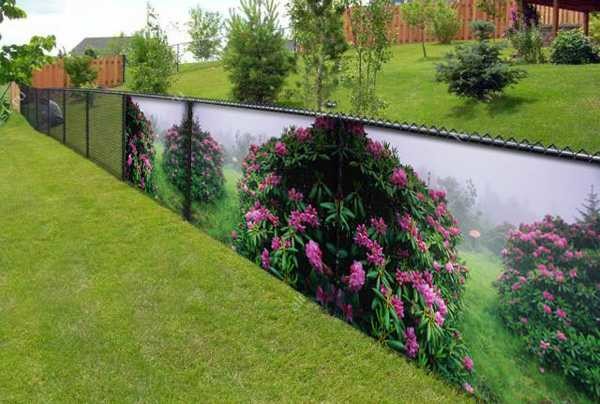
Fence photo grid from the netting of the chain-link and decorate the fence, and cover the area from prying eyes

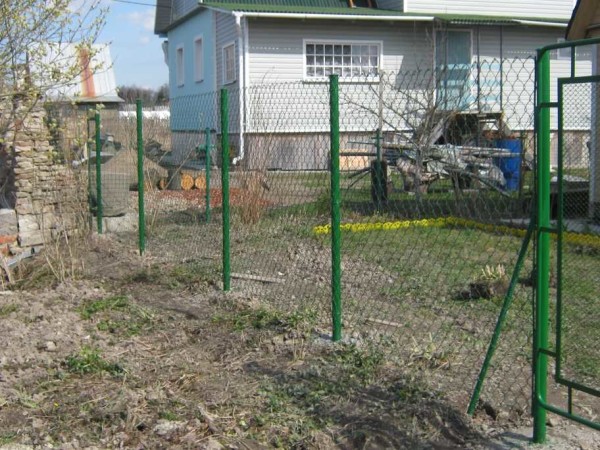
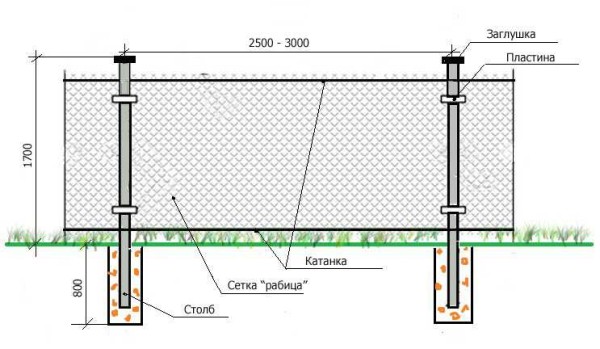
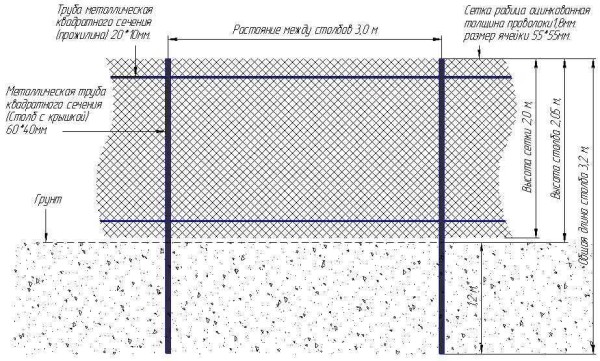
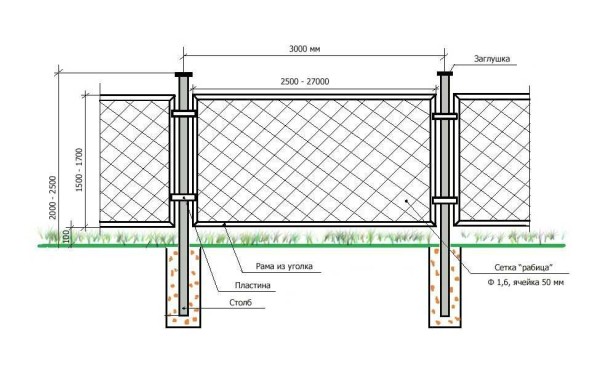
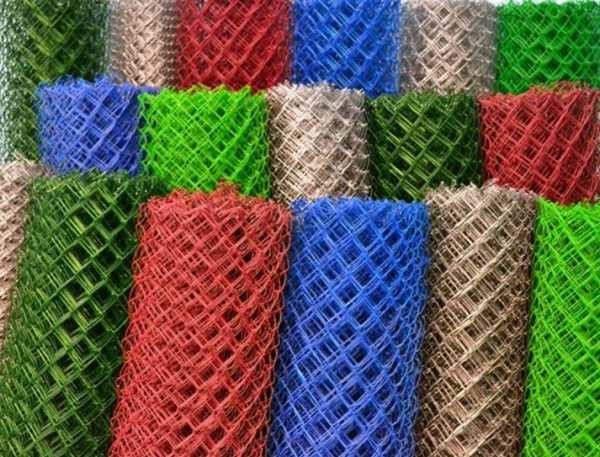
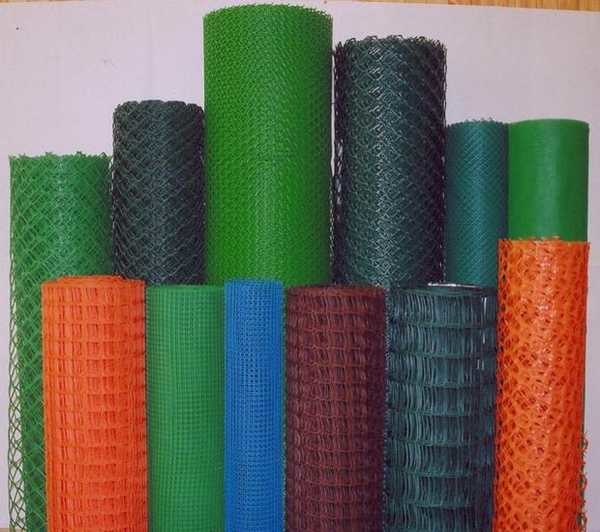
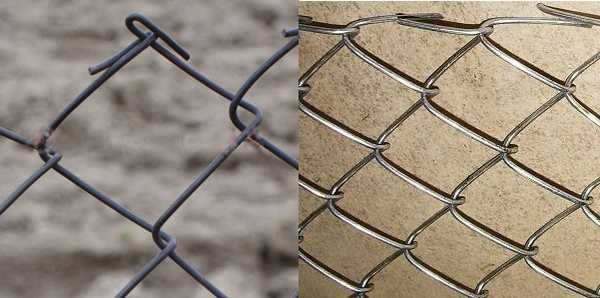
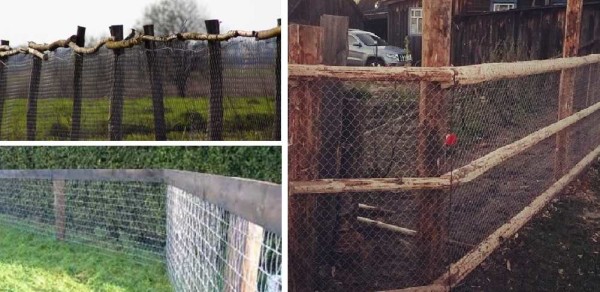
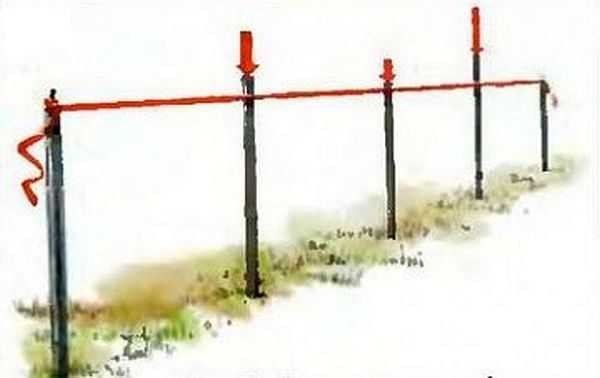
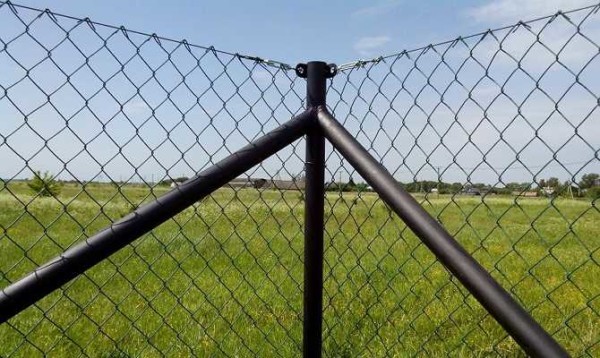
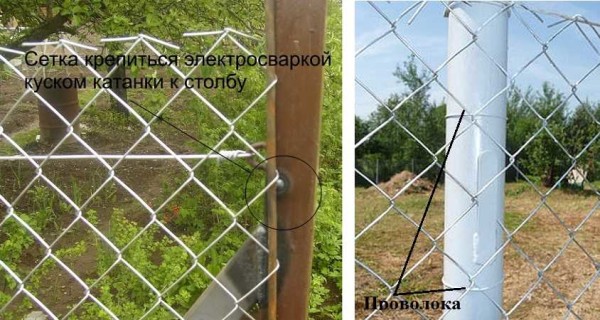
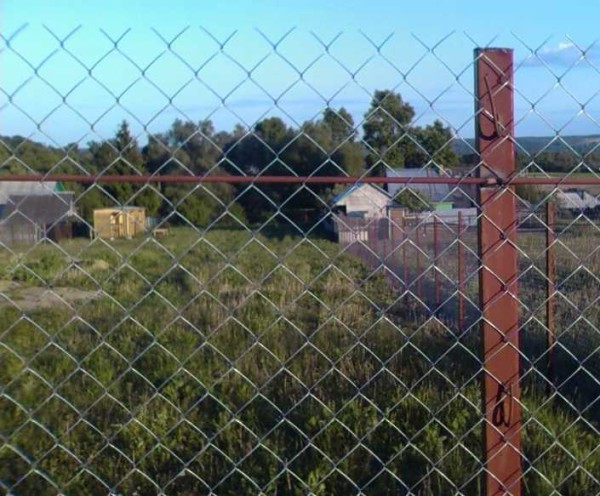
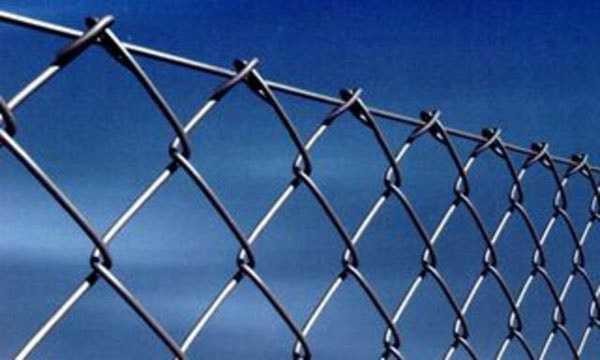
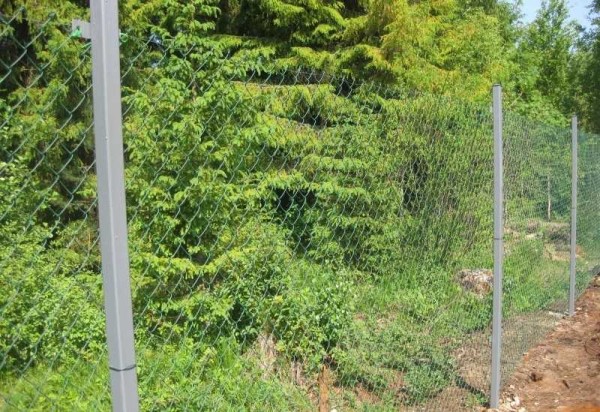
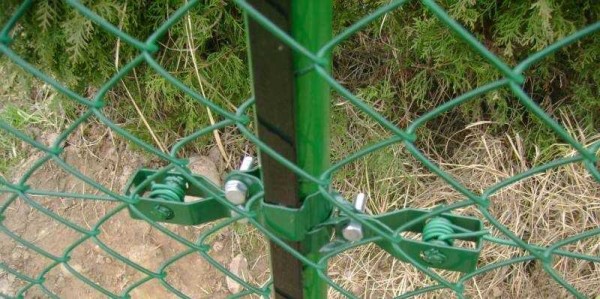
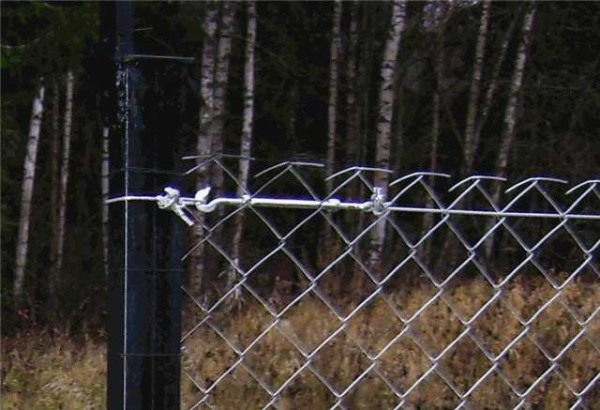
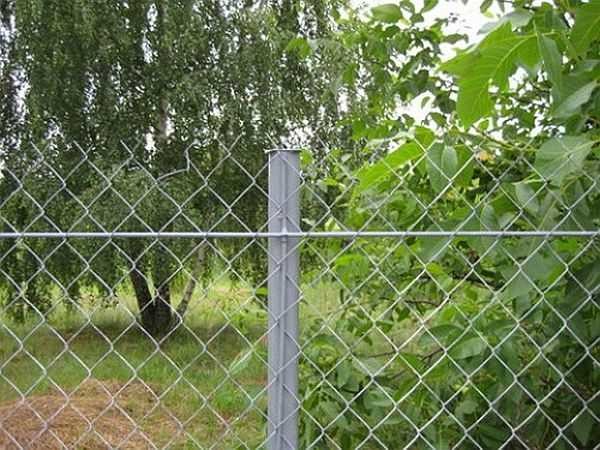
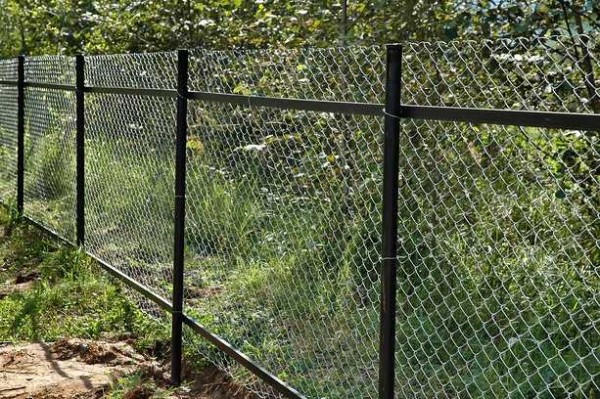
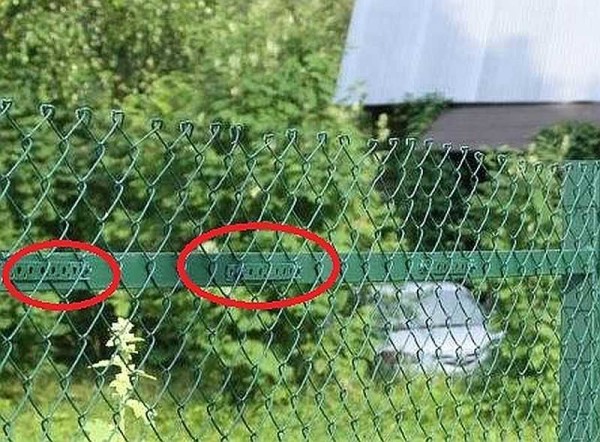
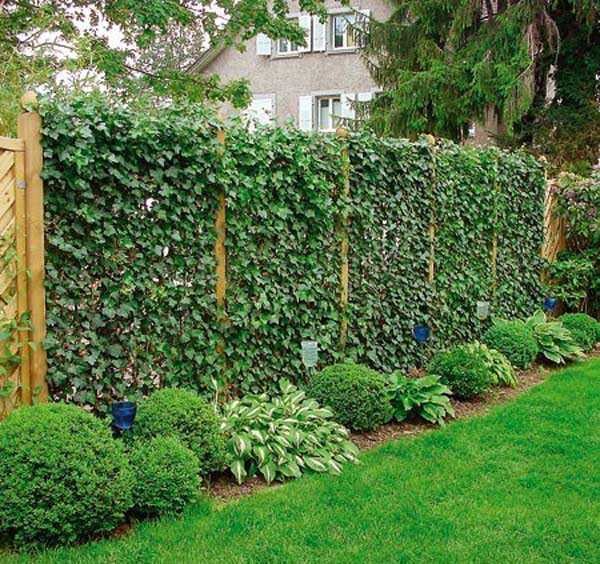
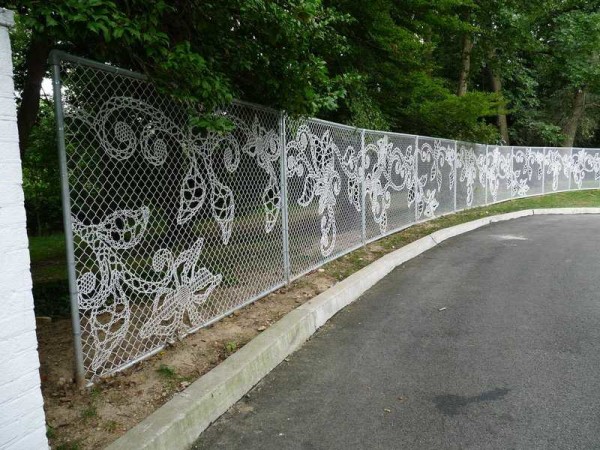
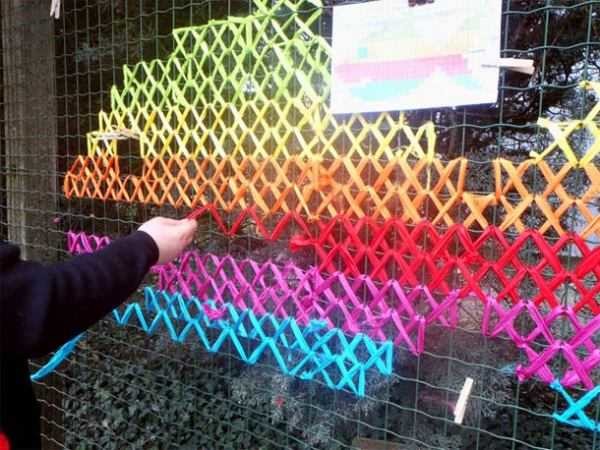

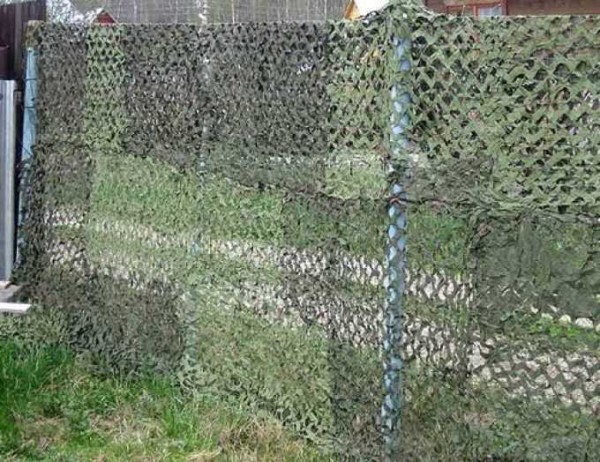
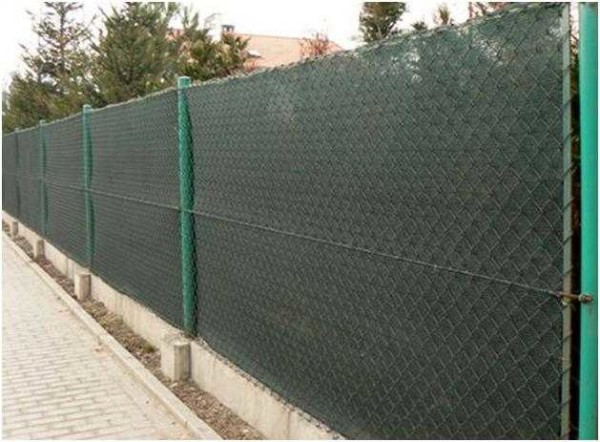
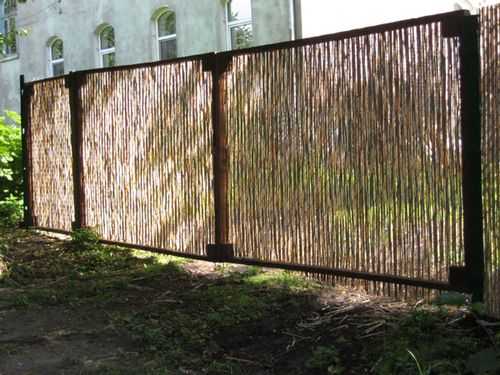
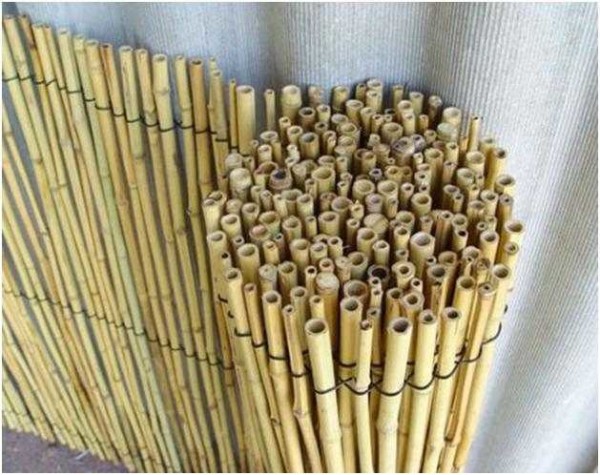
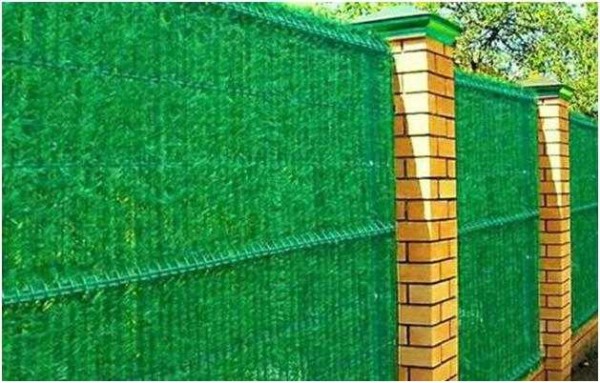
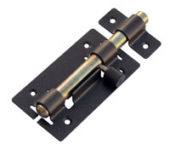

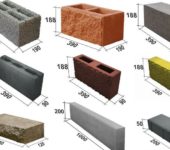
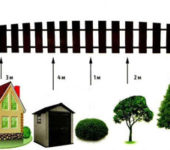
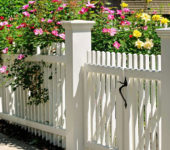





Good evening! I want to stretch the wire from above and below the chain-link mesh so that it doesn't sag. What diameter would you recommend?
No wire diameter will fit ... the wire basically sags ... you are dying to pull up endlessly ... it is better to put something like a corner from above, but from below you can also wire